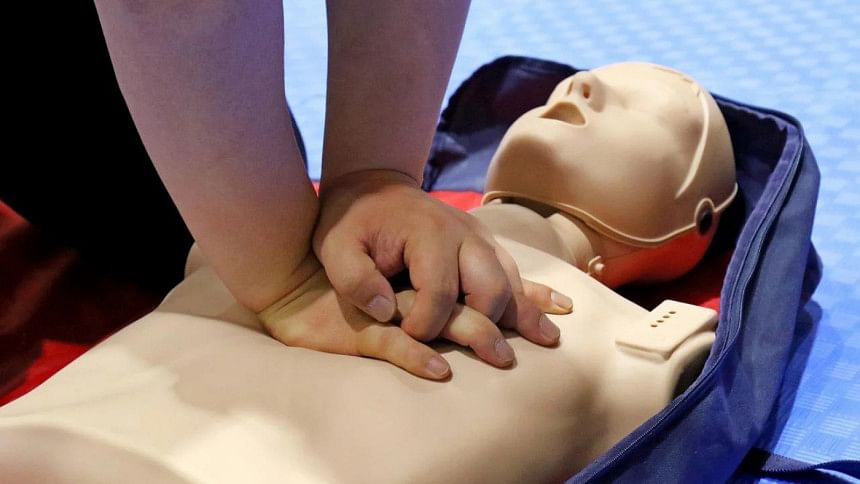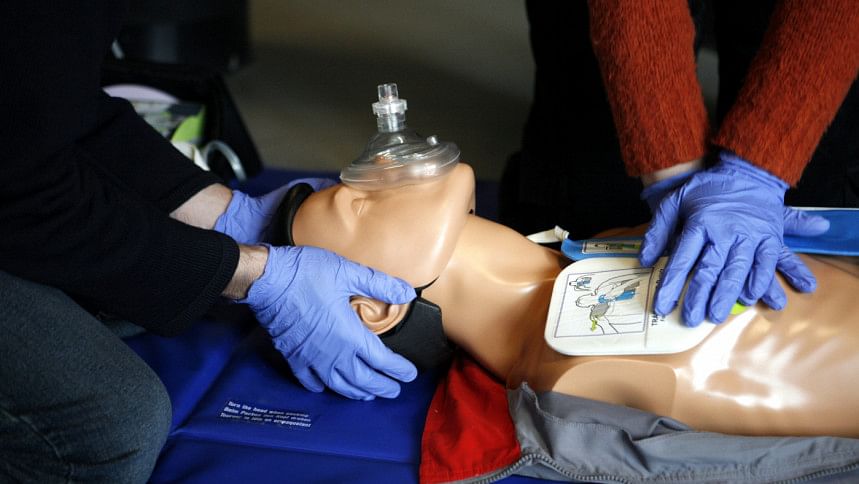CPR: Essential First Aid for saving lives

CPR stands for cardiopulmonary resuscitation. It is a First Aid, life-saving emergency procedure carried out to keep the victim's brain functioning until further medical assistance is available. CPR is performed on people who are unresponsive with no breathing. If performed correctly, it greatly increases the victim's chances of survival. If one gets the training for CPR, it could be the only factor to save someone's life one day.
Imagine a scenario where you are going about your day or about to start one, and, out of nowhere, someone near you collapses with no signs of breathing. Scenarios like these can occur at bus stations, your workplace, or even your home. What can one really do in such a dire event?
More importantly, do you know that performing First Aid within the next few minutes could make the difference between life and death? The chances are that the sufferer has gone into cardiac arrest. However, the person can be resuscitated or stabilised if you act quickly and perform CPR on them.
Believe it or not, any average Joe can do extraordinary things when they acquire the necessary skills, confidence and courage to step up and help a stranger in need!
Here are the top 5 reasons to learn CPR

CPR saves live
Victims of Sudden Cardiac Arrest (SCA) must be treated immediately after being unresponsive. Performing CPR can double or triple the chances of their survival.
CPR protects from being Brain Death
The heart stops pumping blood to the brain and other vital organs during cardiac arrest. With a decrease in blood flow to the brain, the victim falls unconscious. Without proper blood flow, the brain can suffer damage in as few as three minutes. CPR helps keep blood flowing and may help minimise the damage to the victim.
Anyone can learn CPR to make home and workplace safer.
To learn CPR, there are tonnes of inexpensive ways to learn it. Anyone can learn to become a life saver.
How to do it

Step 1. Call 999
First, check your surroundings to ensure your safety and the victim's safety. Next, check the person if they are responsive by tapping their shoulder and shouting, "Are you OK?" If they are not responding, call 999 or ask a bystander to call 999 before performing CPR.
Step 2. Lay the victim on their back and open or clear their airway
After placing the victim carefully on their back, kneel beside their chest. Tilt their head back slightly by lifting their chin. Open their mouth, check for any obstruction, and clear it, such as food, vomit, or tongue.
Step 3. Check for breathing
Place your ear next to the person's mouth and listen for only 10 seconds. If the victim is not breathing, or you only hear occasional gasps, begin CPR.
Use the following steps to perform CPR:
Step 4. Perform 30 chest compressions
Place one of your hands on top of the other and clasp them together. With the heel of the hands and straight elbows, push hard and fast at the centre of the chest, slightly below the nipples.
Push at least 2 inches deep. Compress their chest at a rate of least 100 times per minute. Let the chest rise fully between compressions. For a proper rhythm, perform chest compression by saying, "one Mississippi", "two Mississippi" and so on.
Step 5. Perform two rescue breaths
Making sure their mouth is clear, tilt their head back slightly and lift their chin. Pinch their nose shut, place your mouth fully over theirs, and blow to make their chest rise. If their chest does not rise with the first breath, re-tilt their head. If their chest still does not rise with a second breath, the person might be choking.
Step 6. Repeat
Repeat the cycle of 30 chest compressions and two rescue breaths until the person starts breathing or help arrives.

 For all latest news, follow The Daily Star's Google News channel.
For all latest news, follow The Daily Star's Google News channel. 








Comments